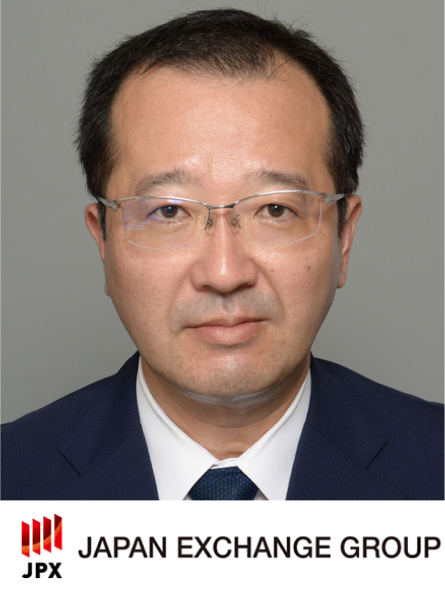# RepRisk interviews Gianluca Spinetti, Global Head of Analytics and Product Development at Sustainable Fitch
1. RepRisk: Please provide some details about your specific role at Sustainable Fitch and the work that you and your team do.
Gianluca Spinetti: I am the Global Head of Analytics and Product Development at Sustainable Fitch, responsible for managing the analytical teams that work on products such as ESG Ratings, ESG Scores, Second-Party Opinion and Transition Assessments.
We do analyses on:
◾ Entities: for example, corporates, financial institutions, and development banks.
◾ Financial instruments: for example, bonds, loans, labelled frameworks and ABS, project financing.
In particular, in our analyses we focus on actions, outcomes, impacts and activities rather than purely on policies and broader commitments. In brief, it’s all about the impact that entities and investments have on the environment and society in which they operate. We also analyze the governance of companies, also from an impact perspective.
The analytical team, which comprises around 100 people specialized in the various market sectors, is spread across regions and continents.
2. RR: In the rapidly evolving ESG data space, what are some of the interesting trends you are following and how are these informing Sustainable Fitch’s priorities for your ESG data analytics and product offerings?
GS: Major themes for us, as an analytical team, are related to the changes and evolution of sustainability disclosure (with those recently launched by the International Sustainability Standards Board), the introduction of ESG-related regulation in various jurisdictions, and the increasing number of regional and local taxonomies.
While entity disclosure has a significant impact on the ability for us to make insightful analyses, regulation and taxonomies can help bring standardization and classification in the various metrics, KPIs and other available information.
3. RR: What strategies does Sustainable Fitch use to address the challenges associated with ESG data gaps, particularly from emerging markets and industries with limited disclosure standards?
GS: First off, Sustainable Fitch is an analytical company focused on ESG ratings, scores, assessments and data on sustainability matters and is completely independent of credit ratings.
In our everyday activities we face many situations with limited, inconsistent, or non-standardized disclosure. We tend to bridge that information gap by a) investing in specialized analysts with sector-specific knowledge; and b) being able to engage with entities to understand businesses in more detail and create insightful analyses and reports.
4. RR: How are you integrating RepRisk's ESG risk incident data into your analytics and product offerings? How does this approach fit within the larger ESG data landscape?
GS: Sustainable Fitch uses RepRisk in all those situations where the traditional entity communication and engagement needs to be complemented with third-party information and news flow. Specifically, we use RepRisk as one of the inputs when we run the “Do No Significant Harm” (DNSH) check for the purpose of the EU Taxonomy Alignment (that also includes Environmental Objectives, Technical Screening Criteria and Minimum Safeguards). RepRisk data helps us identify investments that are at risk of harming specific indicators and provides ongoing monitoring of investments.
5. RR: Tell us how Fitch determines the difference between impact and financial materiality for credit risk when it comes to ESG? What are the benefits of using RepRisk data in the context of assessing impact for your ESG ratings?
GS: Sustainable Fitch’s ESG Ratings differ from other ESG Ratings as our products focus on the impact that investments and entities have on the society and environment in which they operate. We are not focusing on financial materiality, or how entities are managing ESG factors that may impact their financials. In fact, in our analyses we focus on the current business activities performed by the various entities in addition to strategy, targets and other factors such as policies, disclosure, labor rights, just to name a few. When looking at the composition of our ESG Ratings, higher weights are given to the actions and outcomes over policies and broader commitments. ESG Ratings also include the EU Taxonomy Alignment, which uses RepRisk for additional transparency on how companies conduct their business.
6. RR: There’s been an increased call for transparency, comparability, coverage, and granularity in the ESG data and analytics space. How is Sustainable Fitch addressing these issues and how can RepRisk data contribute to these efforts?
GS: While in the past few years we have seen improvement in transparency and disclosure, it is clear that more still needs to be done. We would expect entities to converge on a more limited number of standardized frameworks for disclosure and ISSB (together with various regional/jurisdictional requirements) can help in achieving that.
RepRisk is an important tool to collect information on companies and topics by going outside the traditional corporate-driven communication channels and is instrumental in informing us in our work. That helps to increase transparency and disclosure in the analytical process.
Conclusion
In our latest interview, we spoke with Gianluca Spinetti, Global Head of Analytics and Product Development at Sustainable Fitch, about their approach to ESG analytics that focuses on the impact of entities and investments on the environment and society. Sustainable Fitch integrates RepRisk's ESG risk incident data to assess EU Taxonomy alignment, as part of the ESG Rating analyses, benefiting from RepRisk's data to enhance transparency on business conduct. Sustainable Fitch prioritizes impact over financial materiality and relies on RepRisk to gather data external to companies to supplement corporate communication and disclosure in the analytical process.
Bio - Gianluca Spinetti
Gianluca Spinetti is the Head of Analytics and Product Development for Sustainable Fitch. Gianluca leads a team of ESG analysts across multiple centers and operating across multiple Sustainability related products (ESG Ratings/ESG Scores, SPOs, Transition Assessments, etc). He is also responsible for identifying and developing new ESG products, including the newly created ESG Ratings used by the various analytical teams. Among else, Gianluca has created the analytical methodology and developed it across multiple asset classes.
Gianluca is part of several working groups on Sustainable Finance and he has been a speaker on ESG-related themes in various events for International Association of Corporate Treasurers, Banking Associations, University/Master Programmes, Financial Times (Investing for Good) among else.
He joined Fitch Ratings in 2018 as a Senior Director. Before that he spent over 13 years working in Capital Markets for HSBC where he originated and structured numerous debt transactions for financial institutions, corporates and public sector, including green/social and sustainable financings.
Gianluca holds a BSc in Finance and MSc in Finance from Bocconi University in Milan, Italy.



